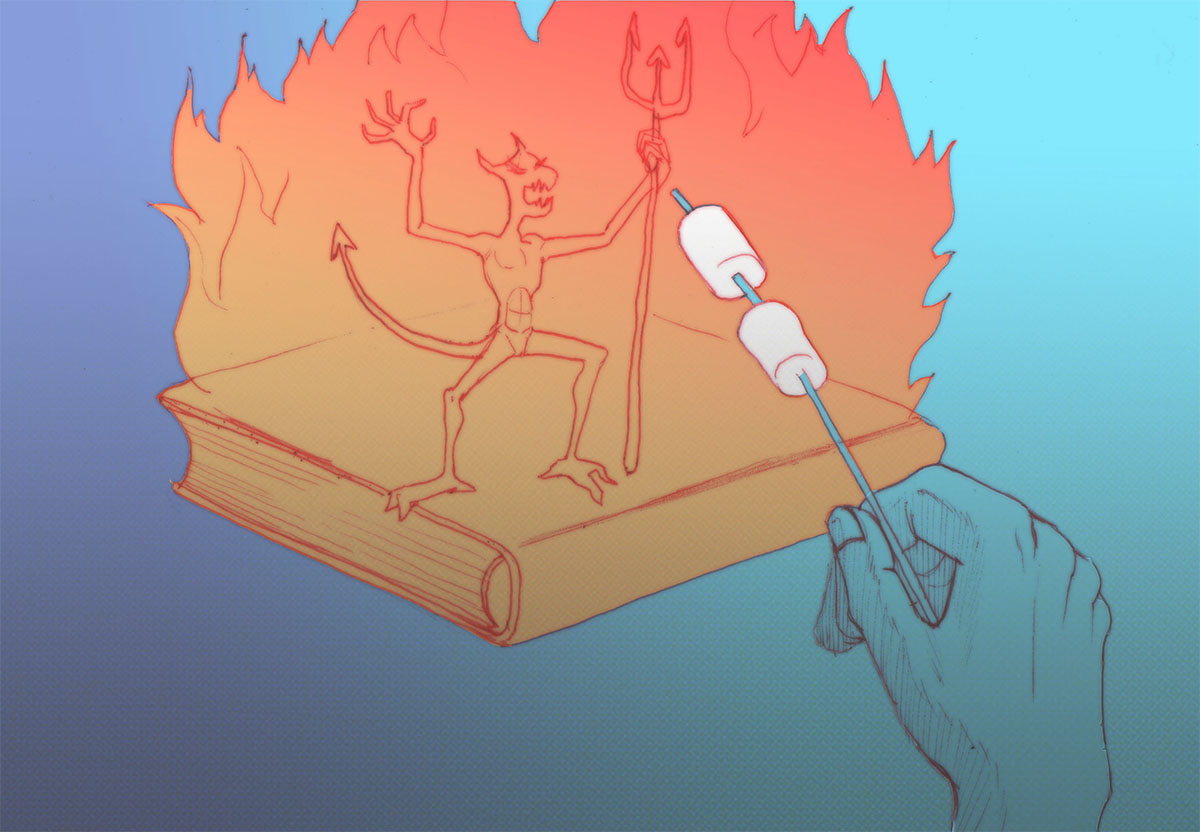
Dress your texts for success: master the art of proof-reading.
When you rely on your writing to make bread, you cannot afford to overlook any details – or you may end up with a substandard meal.
Proofreading is much like separating the wheat of your writing from the chaff of your distractions; it yields superior bread and maximizes the satisfaction of everyone involved.
Proofreading isn’t just important; it’s crucial, decisive and essential.
It’s an absolute requirement if you want to be read and taken seriously.
You cannot hope to succeed as a self-publisher unless you have solid proofreading skills and systems in place.
If you’re a professional writer, you need to think of proofreading as your professional attire.
Let’s break it up on the key elements to keep in mind if you want to dress your texts for success.
On the other hand, you stand a chance of significantly edging up your success as an author or freelance writer as soon as you become a proofreading master.
Brushing up on your approach to proofreading can be done in less than one day of concentrated effort, and the dividends will be gigantic.
Why not get it out of the way sooner than later, and really level up your approach to proofreading right now?
If you’re a professional writer, you need to think of proofreading as your professional attire.
Let’s break it up on the key elements to keep in mind if you want to dress your texts for success.
Leave your writing to rest before proofreading.
One of the easiest ways to miss typos and overlook awkward clauses and repetitive sentence structures is to revise your texts immediately after you finish writing them.
You should always make sure to take a break and leave your writing to rest before you try to polish it.
The more time you can afford to put between the writing and proofreading processes, the better off you’ll be – you should always write eagerly so that you can proofread peacefully.
By coming back with a fresh mind and fresh eyes you’ll find it much easier to spot any syntactical incongruences and outright grammatical blunders.
Writing and proofreading are contrasting processes that should be compartmentalized as much as possible.
By focusing on one thing at a time, you’ll reduce your inner tension and you’ll manage to write faster and proofread more effectively.
You’ll also be able to check if your ideas are expressed clearly when you’re fully observing from the position of a reader, as opposed to the position of a writer.
Trying to be the reader and the writer at once will amount to unproductive clashing, and will place you in a state of inner tension that’s comparable to trying to build a fire while trying to freeze water.
Writing and proofreading are contrasting processes that should be compartmentalized as much as possible.
By focusing on one thing at a time, you’ll reduce your inner tension and you’ll manage to write faster and proofread more effectively.
You really can’t rush through your proofreading efforts and hope you’ll get perfect results.
You can’t effectively read your text while wearing your writer’s hat… and you can’t effectively write using your reader’s hat.
Writing is about expressing yourself, while reading is receiving impressions from a text; these are two conflicting mindsets, and it’s not easy to just flip a switch in your head and go from one to the other.
Writing and proofreading at the same time can certainly be done, but the energy expense will be much higher and the results will be inferior.
Chances are both aspects will suffer if you try to do them simultaneously.
Rather than switching back and forth into the appropriate mindset, it will be simpler to just organize your schedule so you have time blocks suitable for each task.
Check yourself before you check your writing.
Effective proofreading requires unwavering focus and strong attention to detail.
It’s not something that you can do when you’re stressed or worried or juggling multiple tasks at once.
It’s something that requires a peaceful frame of mind, objective reasoning, and undivided attention.
For this reason, you may want to set your proofreading aside to times when you can shut off all distractions and make sure you won’t be interrupted by anyone.
You will do your best, fastest, most effective proofreading when your mind is at ease, so it’s worth to get the habit of checking your mental and emotional states, to begin with.
When you feel you’re not up to the task, just save it for later.
Organize your schedule so that you are able to carry out different tasks when the mood is right.
Study your own rhythms to learn the right moments in your work routine to go about revising your texts.
You may find it beneficial to learn meditation, breathing exercises, relaxation techniques, or simply to get in the habit of going for a walk to adopt the right frame of mind. In life as in proof-reading, mastering your emotions and directing your mental states is the key to success.
Organize your schedule so that you are able to carry out different tasks when the mood is right.
Study your own rhythms to learn the right moments in your work routine to go about revising your texts.
Some people may get their best results early in the morning, others may find their peak concentration is late in the evening; others yet may find it’s not really about the time of the day, but simply about having a relaxed frame of mind or being in a peaceful setting.
Break down your proofreading into small, manageable steps
No matter how complex the task at hand may be, you will do it more effectively when you break it down into smaller, separate steps – and go through a single step at a time.
This principle applies beautifully to proof-reading, especially since you can rely on tools to assist you as you go through each separate step (more on that in the following section).
Proofreading involves analyzing different dimensions of a text at once, including spelling, grammar, syntax, and clarity.
Spelling: In this step, you need to look at the words individually to make sure there are no typos, as well as making sure all numbers are properly formatted.
Grammar: Here, you must check how the words come together by looking at individual clauses and hunting down grammatical blunders while paying close attention to elusive but typical problems like switched homonyms, inaccurate contractions, and misplaced apostrophes.
Syntax: When it comes to this step, you want to focus on spotting awkward sentence structures, as well as repetitive word patterns.
Clarity: Finally, you want to look at the flow of paragraphs to check if your ideas are expressed clearly enough to the readers.
Rather than adamantly trudging through the bulk of your writing while juggling these different aspects, it’s much more manageable to do multiple passes while holding a single aspect in mind.
The ideal order of the proofreading steps will depend on the type of writing, the tools you’re using, as well as your own mood at the time.
Typically, it feels more natural to go adopt inductive reasoning and go from the specifics to the general: start by looking at individual words, then clauses, next sentences, and finally look at the paragraphs.
Regardless, you can freely choose the order that you go through each step, and you may even go through each separate step more than once as do your multiple proofreading passes.
In some cases, you may want to lock your attention into sections or chapters separately, rather than going through the entire text at once.
As you refine and solidify different sections of the text, you’ll feel more in control of your writing and proofreading will not feel like such a daunting task.
The ideal order of the proofreading steps will depend on the type of writing, the tools you’re using, as well as your own mood at the time.
You may start by checking for typos, then look for grammar errors, then pay attention to sentence patterns, then make sure your ideas are expressed clearly, which could make you realize you need to change some sentences, which could lead to changes that might require re-checking your spelling.
Insert Quote Here
The point in compartmentalizing tasks is to make them easier to handle; this will allow you to remain confident and stay focused, as you go through every single step with the least effort and most accuracy.
You will find it’s much easier and faster to go breeze through the proofreading process towards a stellar piece of writing if you focus on just a single aspect at a time, rather than trying to fix everything at once.
Some useful tools that help you improve your proficiency
Proofreading can be a daunting task when you have to do it exclusively on your own.
Luckily, as modern writers we benefit from a wide range of tools that can make this work a little easier.
While these tools can’t reliably make up for any major shortcomings in your abilities, they certainly can help tackle smaller details, so you can stay focused on the big picture.
The most useful and obvious tool you can rely on as a modern writer is a spellchecker.
Nowadays there are advanced tools available that raise spell checking to a higher standard by drawing on the power of machine learning.
This is a standard feature of modern word processors, and it’s incredibly useful in helping you sort through most typing errors as well as some grammatical issues.
If you’re not using your spellchecker, you’re really undermining your efforts and wasting energies that would be best applied to other steps of the proofreading process.
Just remember spellcheckers aren’t flawless, and will sometimes miss contextual errors; it’s up to you to make the final call, in case of doubt.
Nowadays there are advanced tools available that raise spell checking to a higher standard by drawing on the power of machine learning.
One of the best and most popular of these tools at the moment is Grammarly, and its best-regarded alternatives include WhiteSmoke, ProWritingAid and Slick Write.
All of these are commercial tools that are well worth the cost, and all have limited free versions that you may want to take try; these could be quite more valuable allies than your average spellchecker.
As a general rule, the more time you spend improving your writing skills, the less burdensome will be the proofreading stage.
Perfecting your writing is an ongoing process, and you’ll get better the more you practice.
It’s great to be able to rely on these tools to assist in your proofreading, but it’s even better to keep honing your skills until fewer and fewer corrections are needed.
As a general rule, the more time you spend improving your writing skills, the less burdensome will be the proofreading stage.
Perfecting your writing is an ongoing process, and you’ll get better the more you practice.
The same is true about proofreading, so you may want to get ahead of the curve faster by taking proofreading tests online, like those available at the Society for Editors and Proofreaders (https://www.sfep.org.uk/resources/test-yourself/).
Peculiar tricks that will improve your proofreading proficiency
The real challenge of proofreading is that you’re just too familiar with the text you wrote, to a point where your involvement makes you blind to cosmetic blunders: you may find at times the writer’s hat won’t come off and you are simply unable to look at the writing objectively, from the perspective of a reader.
This is why writing and proofreading are typically assigned to different professionals, within the publishing industry.
When you’re self-publishing your own content, it can be wise to hire proof-reader, who will be able to look at your writing with fresh eyes.
However, you may not have the resources to get someone else to reliably help you proofread.
In this case, you should rely first and foremost on the tricks listed in the earlier sections of this article:
Sometimes just stepping back from the work for a little while will refresh your mind and allow you to spot errors more accurately.
When you’re self-publishing your own content, it can be wise to hire proof-reader, who will be able to look at your writing with fresh eyes.
Sometimes you can succeed in using relaxation tricks to step into the right frame of mind for effective proofreading.
But what else can you try when a deadline happens to be looming over and pressing you to wrap up your manuscript?
Here are some peculiar tricks that may prove useful:
– Try reading the text out loud, since this will help you shift into reader’s mode and will make it easier to pick up on any issues that you might have been overlooking.
– Go through the paragraphs in a section from last to first, or even in a completely random fashion; as you do this, look at each paragraph as a self-contained text whose proofreading can be broken down into micro steps.
– This may sound counter-intuitive, but some people find it easier to proofread two pieces of writing at once and shift their attention freely between the two to keep a momentum going.
– In a similar reasoning, it can prove useful to take short breaks from your proofreading process and look at something written by someone else that you find enjoyable, to reconnect with your enthusiasm for the written word.
– An old-fashioned approach will sometimes prove effective; try printing out your text and proofreading with pen in hand.
– Moving around and stretching for a bit can also prove effective, when you begin to struggle with the proofreading process.
– Listening to instrumental music on noise-cancelling headphones is a very effective way to shut out outside voices that might distract you from your proofreading.
– When nothing else seems to work, just take your laptop for a walk and find a different setting where you find it easier to stay focused.
Proofreading is an essential skill for any professional writer, since it allows you to add impact and credibility to your writing, as well as making your work appear more refined and interesting.
Your motivation will rise as your writing causes increasingly more impact on your readers… which is only natural, since what you’re effectively doing is learning how to dress your texts for success.
Hopefully you’ve learned from this article that effective proofreading is a skill that you can (and should) develop, in order to maximize your writing efforts.
Embrace the strategies detailed here, and you’ll soon renew your passion and commitment towards self-publishing your work.
Your motivation will rise as your writing causes increasingly more impact on your readers… which is only natural, since what you’re effectively doing is learning how to dress your texts for success.
You have to dress your texts to achieve the right effect. You also have to style your content to cause the right impression. Make sure to also see our recent article with the latest tips for styling your writing for the web.


